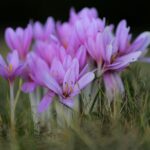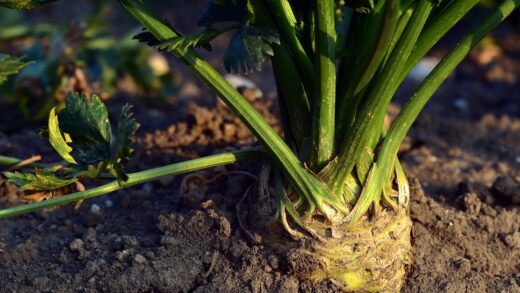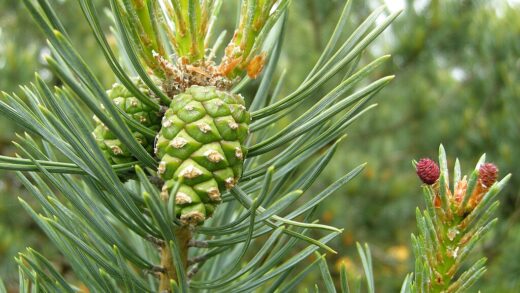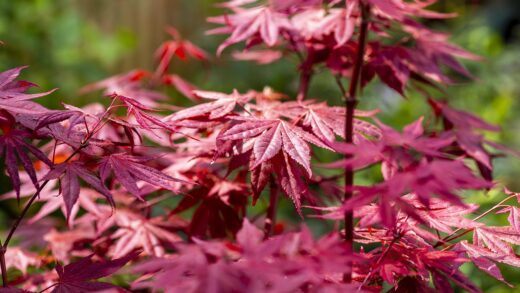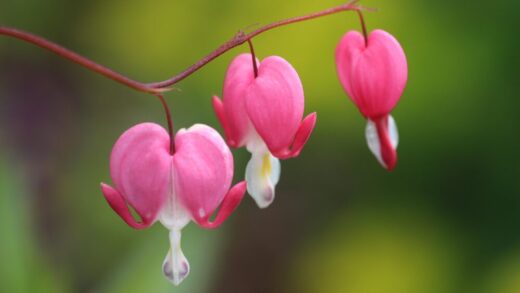Pruning is a vital and ongoing horticultural practice that is essential for shaping pineapple sage into a well-formed, productive, and healthy plant. Far from being a mere cosmetic task, the act of strategically cutting back the plant serves multiple crucial purposes, including encouraging a denser, bushier growth habit, preventing the plant from becoming tall and leggy, and ultimately stimulating a more profuse floral display. Without any pruning intervention, pineapple sage has a natural tendency to grow tall and sparse, with long, woody stems that are prone to flopping over. By understanding the proper techniques and timing for pruning, you can guide the plant’s growth to create a specimen that is not only more aesthetically pleasing but also structurally sounder and more vigorous.
The fundamental principle behind pruning this plant is to manipulate its apical dominance. Plants naturally concentrate their growth hormones at the terminal bud, or the very tip of each stem, which encourages upward growth. When you prune or “pinch” off this terminal bud, you break the apical dominance and signal the plant to redirect its energy to the lateral buds located further down the stem at the leaf nodes. This results in the growth of two or more new side shoots where there was previously only one, which is the key to creating a full, multi-branched plant. This simple action, repeated throughout the early part of the growing season, can transform a lanky seedling into a dense, compact shrub.
Beyond shaping the plant for a bushier form, pruning is also a critical tool for health and sanitation. Throughout the growing season, it is important to remove any leaves or stems that appear dead, damaged, or show signs of disease. This maintenance pruning not only improves the plant’s appearance but also removes potential reservoirs for pests and pathogens, preventing them from spreading to the rest of the plant. Good air circulation is key to preventing fungal diseases like powdery mildew, and selectively thinning out some of the dense, interior branches can significantly improve airflow through the plant’s canopy.
Finally, pruning is intrinsically linked to harvesting. Every time you snip a stem to use its fragrant leaves in the kitchen or for a fragrant bouquet, you are effectively pruning the plant. This symbiotic relationship means that you can enjoy the bounty of your pineapple sage while simultaneously promoting its healthy, bushy growth. This regular, light harvesting throughout the season acts as a continuous form of pinching, constantly encouraging the plant to branch out and become fuller, ensuring a steady supply of fresh leaves and a well-structured plant.
The purpose and benefits of pruning
The primary purpose of pruning pineapple sage is to control its shape and size. Left to its own devices, the plant’s genetics drive it to grow tall quickly, which in a garden setting can result in a lanky, top-heavy plant that is structurally weak. Regular pruning, especially early in the season, counteracts this tendency. By encouraging lateral branching, you create a plant with a stronger, more self-supporting framework and a much more pleasing, rounded form. This is particularly important in windy locations where tall, unpruned stems can be easily snapped.
A significant benefit of this practice is an increase in both foliage and flower production. While it may seem counterintuitive that cutting parts of the plant off would lead to more growth, each cut that stimulates two new branches effectively doubles the number of growing tips on the plant. This results in a much denser canopy with a greater number of leaves to harvest. Consequently, when the plant’s flowering time arrives in autumn, this increased number of stem tips translates directly into a more abundant and spectacular floral display, as flowers are produced at the ends of these stems.
Pruning also plays a role in rejuvenating the plant, particularly for perennials in warmer climates or plants that have been overwintered. A hard prune in the early spring, which involves cutting back the old, woody stems from the previous year, stimulates the plant to send up a flush of fresh, vigorous new growth from its base. This removes any winter-damaged or less-productive woody parts and essentially resets the plant for the new season, ensuring that its growth is vibrant and healthy right from the start.
Another key benefit is disease prevention. A dense, unpruned pineapple sage can develop a thick canopy of leaves that restricts air movement and traps humidity. This creates the perfect microclimate for fungal diseases, most notably powdery mildew, to thrive. By selectively thinning out some of the interior branches, you open up the plant, allowing air and sunlight to penetrate the center. This helps to keep the foliage dry and creates an environment that is far less hospitable to fungal pathogens, contributing significantly to the overall long-term health of the plant.
The best times of year to prune
The timing of your pruning activities for pineapple sage is critical, as cutting at the wrong time can be ineffective or even detrimental, particularly to its flowering. The main period for formative pruning—pinching and shaping—is during the spring and early summer. This is when the plant is in its active vegetative growth phase, putting on new leaves and stems rapidly. Pruning during this window takes full advantage of the plant’s natural vigor, ensuring that it responds quickly by sending out new lateral growth, leading to the desired bushy habit.
You should continue this light pruning and pinching until about mid-summer. However, it is crucial to stop all significant pruning by late summer. Pineapple sage is a short-day plant, and it begins to form its flower buds in response to the shortening daylight hours of late summer and early autumn. If you continue to prune the plant into this period, you will be cutting off the very stem tips where the flower buds are developing. This is a common mistake that leads to a healthy-looking plant with very few or no flowers. A good rule of thumb is to cease all major shaping by early August.
Early spring is the ideal time for any hard or rejuvenation pruning. For plants that have survived the winter outdoors in mild climates, this involves cutting back the old, woody stems from the previous season to about 15 centimeters from the ground. This should only be done after the last threat of frost has passed. This hard pruning encourages the plant to produce a flush of new, tender, and highly productive growth from its base. For plants that have been overwintered in pots, this hard prune can be done just before you begin to move them back outdoors.
Throughout the entire growing season, from spring until the first frost, you can and should perform light maintenance pruning. This involves the removal of any yellowed, dead, or damaged leaves and stems as soon as you see them. This type of pruning, often called deadheading or sanitation, can be done at any time without harming the plant. It keeps the plant looking tidy and helps to prevent the development and spread of diseases. This is an ongoing task rather than a single event in the gardening calendar.
Techniques for pinching and shaping
Pinching is the simplest and most effective pruning technique for encouraging a bushy pineapple sage, and it should be started when the plant is still young. It can be done with no tools at all. Simply use your thumbnail and index finger to pinch off the top-most cluster of new leaves on each main stem, right above a set of side leaves or nodes. This removes the apical bud, breaking its dominance and activating the dormant buds at the nodes just below the pinch. These nodes will then sprout into two new stems.
This pinching process should be repeated regularly throughout the late spring and early summer. Once the two new stems that grew from your first pinch have developed a few sets of leaves, you can then pinch the tips of those new stems. Repeating this process creates an exponential effect: one stem becomes two, two become four, four become eight, and so on. This is how you build a strong, dense framework for the plant. It requires consistent attention for the first couple of months of the growing season, but the payoff in the plant’s final form is substantial.
For slightly thicker stems where pinching with your fingers is difficult, a clean, sharp pair of scissors or small pruning snips (secateurs) can be used. The principle remains the same: make your cut just above a leaf node. Always use clean tools to avoid introducing bacteria or fungal spores into the fresh cut. This light, repeated trimming is also how you can shape the plant, maintaining a rounded or mounded form by cutting back any stems that grow too long and disrupt the overall symmetry.
It’s important not to be too timid with this early-season shaping. While it may feel like you are slowing the plant’s upward growth, you are actually investing in its long-term structure and productivity. A young pineapple sage that is regularly pinched will be much fuller, stronger, and will ultimately produce far more leaves and flowers than a plant that is allowed to grow tall without intervention. This small, consistent effort in the first half of the season sets the stage for a spectacular performance in the second half.
Hard pruning for rejuvenation
Hard pruning, sometimes called renovation or rejuvenation pruning, is a more drastic form of cutting back that is used to revitalize an old or overgrown pineapple sage. This technique is most applicable to plants that have survived the winter and have a substantial amount of old, woody growth from the previous season. The goal is to remove this less productive wood and stimulate the growth of fresh, vigorous stems from the plant’s crown or base. This is a key practice for maintaining the long-term health of perennial pineapple sage in warmer climates.
The correct time to perform a hard prune is in the early spring, but only after all danger of frost has passed. Pruning too early could expose the plant’s crown to a late freeze, and any tender new growth that emerges could be killed. Wait until the weather has stabilized and you perhaps see the first tiny new buds beginning to swell at the base of the plant. This is the signal that the root system is active and ready to support a new flush of growth.
The technique involves using a strong, sharp pair of secateurs or loppers to cut back all of the previous year’s stems. Cut them down to a height of about 10 to 15 centimeters from the ground. This may look severe, leaving you with just a cluster of woody stubs, but a healthy plant with a strong root system will respond with surprising speed. This drastic haircut removes any winter-damaged or diseased wood and allows sunlight and air to reach the crown of the plant, encouraging a dense flush of new shoots.
Following a hard prune, it is a good idea to provide the plant with some encouragement. This is an excellent time to apply a layer of fresh compost around the base of the plant and to give it a thorough watering. The nutrients from the compost will provide the energy needed for the subsequent burst of growth. Within a few weeks, you should see numerous new, tender green shoots emerging, which will form the framework of the plant for the new growing season.








